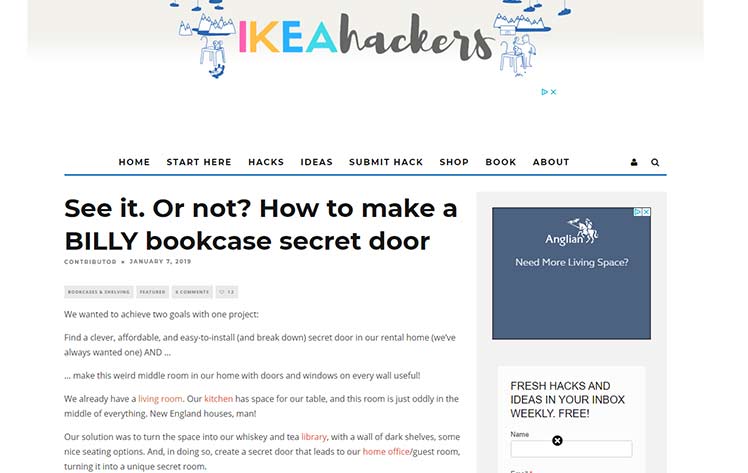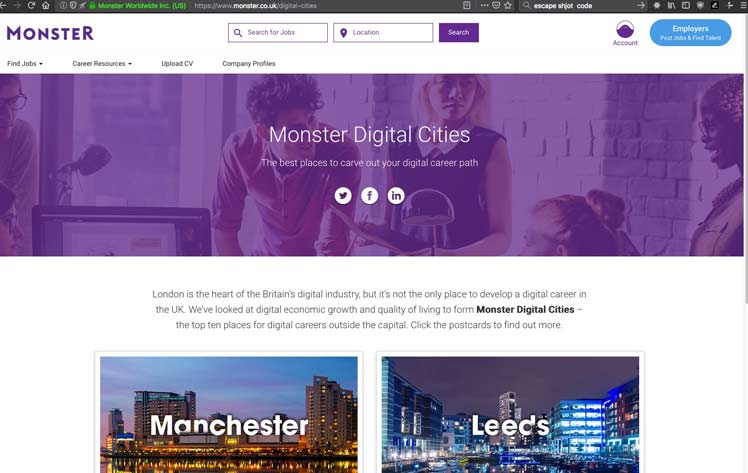1. Start with a strategy
If you’re going to invest in content marketing, you must have a strategy. This is especially important when your budget is limited. Without a logical strategy to guide you, there’s a risk you’ll waste time and money creating content for the wrong people, in the wrong format at the wrong time.
That said, effective strategy doesn’t have to be fancy or complicated. As Richard Rumelt, Professor of Business & Society at UCLA Anderson and author of Good Strategy, Bad Strategy explains,
Good strategy has a basic underlying logic.
So, to build your own basic content marketing strategy, you need to do the following:
Gain an objective view of the competitive landscape and an understanding of your biggest opportunities and threats
Spend some time looking at the content your audiences Look at relevant search results, social media activity, email newsletters and forums.
Tools to help you do this include:
- Answer the public – for commonly asked questions
- Keyword planner – for monthly search volumes
- Buzzsumo – for top shared content
- Boardreader – for relevant forum discussions
In doing this, you might find forums or blogs talking about your product in ways you’d never considered. A great example of this is the IKEA Hackers community dedicated to turning ubiquitous flat packs into bespoke pieces of furniture.

Decide how to tackle those opportunities and threats with your content marketing
Once you’ve noted down all your insights, consider your own expertise, budget, goals and available resource, and decide which opportunities to go after and which ones to leave.
For example, you may decide to use content marketing to appeal to a new audience rather than compete for the attention of your existing customers in a highly competitive landscape.
Formulate a manageable plan with clear guidance on what to create, and when to create it
Create a specific list of content to produce including the exact topic, title, format, resource required, publish date, promotion tactics and specific, measurable goals. I’d recommend using a shared document or free Trello board to manage collaboration!

Image source: Trello
2. Create core and derivative assets
A spot of creative thinking and content repurposing can help you make the most out of your limited content marketing budget.
Creating core and derivative assets is when you take one big idea and turn it into several spin-off pieces of content that all touch on the same topic. It will make your resources go the extra mile, and keep your material tightly focused on your strategy. Effective repurposing takes foresight, but it results in a greater wealth of content at a fraction of the cost.
For example, one white paper could target a whole host of different audiences once it is repurposed into the following formats:
- Blog post series
- ebook for offline readers
- Webinar with Q&A
- Podcast version of the webinar
- Video summary
- How-to guide for beginners
- Interview with expert
- Case study posts for social media
- Data visualisation for key stats
- Editorial article for feature in external publications
Here’s how you repurpose:
Arrive at one, winning idea
- Revisit your strategy to determine the most opportune formats and topics
- Choose a topic that is substantial enough to merit the production of high quality, long-form content to address it
- Research and compile your source material

Image source: Builtvisible’s guide to Reddit
Write or commission a cornerstone asset
Our good friend and copywriter Joel Klettke, describes cornerstone assets as the “largest/most comprehensive resource you will create.” He notes that usually this is a guide, whitepaper, or ebook, but it could also take the form of a presentation, an event, or even a long video.
If you don’t have the confidence, time, or writing acumen needed to produce this content yourself, this is where you should invest whatever modest budget you have. This will be the single most important piece of content you produce, and it will inform every other asset that comes afterwards.
Produce supporting assets
Now that you have all the research done and the major piece written, you can produce smaller pieces of content using the same research and material. Consider:
- Turn stats into tweets or data visualisations
- Section out your chapters, then reframe them into a blog series
- Produce a podcast to review your findings
- Summarise your key takeaways in compelling FAQs
- Compile a curated list of corroborative research
- Re-skin your main points into a Slideshare presentation
- Roll the juiciest tidbits into an email campaign
- Turn your slideshow into a video by adding backing music or a voiceover
Voilà. By creating one valuable, high quality piece of content, you’ve also created a heap of complementary material.
For example, we created this cornerstone asset for Monster.co.uk which compiles a huge database of information and was then repurposed into smaller regional stories, social assets and blog posts.

3. Promote, promote, promote
It’s not enough to create great content. You also need to get in front of the right people.
So, go ahead—tweet about it, distribute it to your email list and outreach it to relevant journalists and bloggers.
You need all the promotion you can get, because every minute of every day more than half a million pieces of content get uploaded to Facebook alone. That’s a lot of competition. Your content, earth-shattering as it may be, will not promote itself—you need to give it a helping hand by doing the following:
- Create optimised landing pages which promote your content and area of expertise
- Craft email newsletters that keep your users informed
- Use paid social to target relevant audiences
- Partner with external sites to target a similar niche and larger audience
- Post your content in relevant online communities and forums
Also, don’t forget to promote your content on your own site by linking back to your cornerstone asset, along with any other pieces (blog posts, podcasts, etc.) with every new piece of content you create.
Hopefully these quick tips demonstrate that while good content marketing does take time and energy, it does not always have to be a huge financial investment. If you have expertise and your own industry insights at the ready, you can create highly valuable content that is flexible enough to meet the needs of a wide range of audiences. We’d love to hear about examples of your own content marketing efforts and if you’re stuck for ideas we can help!
